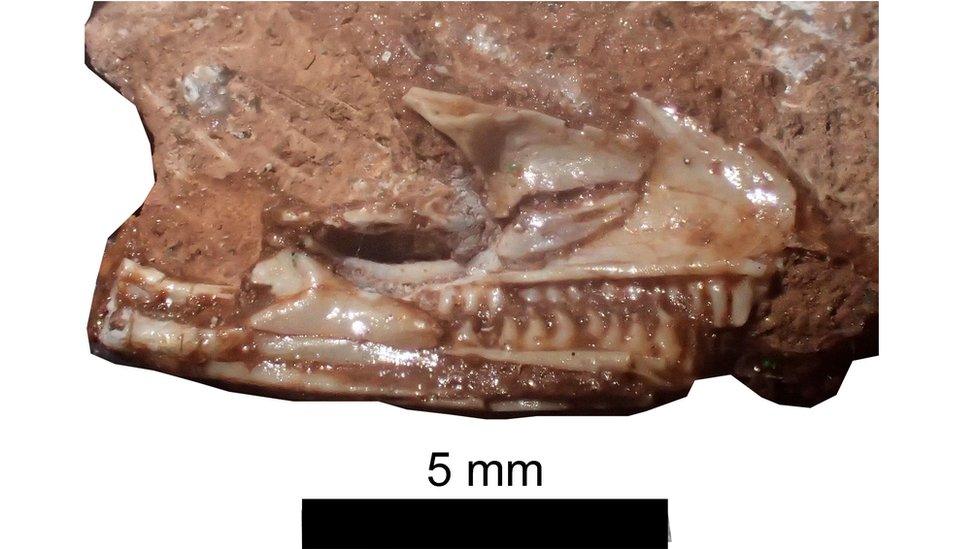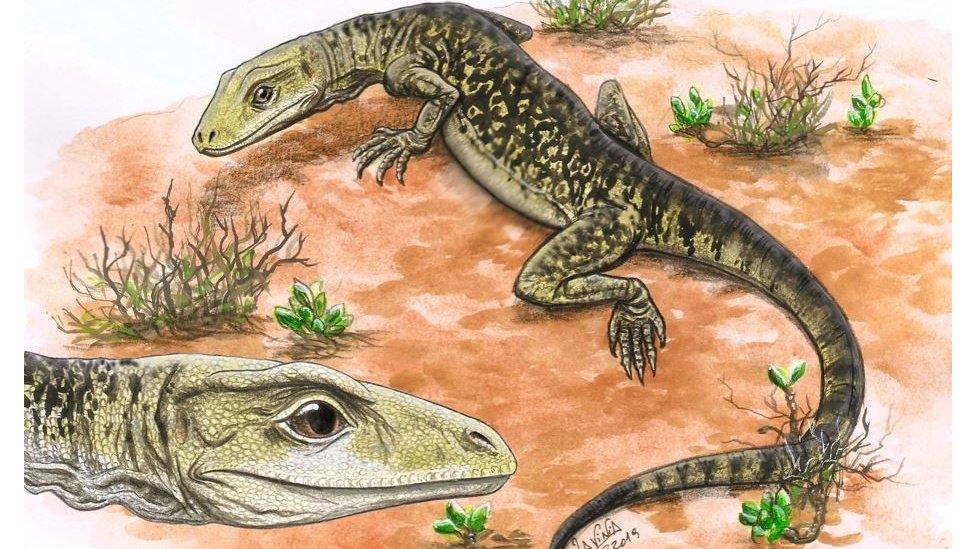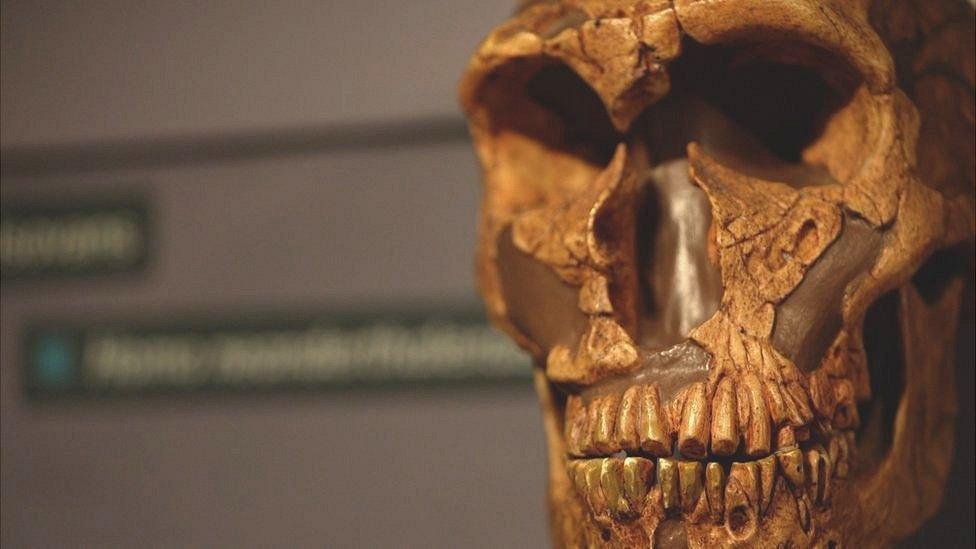Bristol: Fossil shows lizards millions of years older than thought
- Published

Dr Whiteside said the specimen had been simply labelled 'clevosaurus and one other reptile'
A new discovery suggests lizards have existed for 35 million years longer than previously thought.
The University of Bristol took CT scans of fossilised remains of a reptile that sat in a Natural History Museum storage cupboard for decades.
They show the unknown reptile to be closely related to modern-day lizards.
Dr David Whiteside, who led the research, said the fossil was "likely to become one of the most important found in the last few decades".
It was thought lizards originated from the later Middle Jurassic period but the new findings show they lived in the Late Triassic period (237-201 million years ago).
Sharp teeth
The fossil impacts all estimates of the origin of lizards and snakes, together called the Squamata, and affects assumptions about their rates of evolution.
It was found in storage in a collection from the 1950s, including specimens from a quarry near Tortworth in South Gloucestershire.
The team has named its discovery Cryptovaranoides microlanius, meaning 'small butcher', in reference to its jaws, which are filled with sharp-edged slicing teeth.

An artist's impression of cryptovaranoides microlanius
Dr Whiteside, from Bristol's School of Earth Sciences, first spotted the specimen in a cupboard full of Clevosaurus fossils.
He explained: "This was a common enough fossil reptile, a close relative of the New Zealand tuatara that is the only survivor of the group the Rhynchocephalia, that split from the squamates over 240 million years ago."
"As we continued to investigate the specimen, we became more and more convinced that it was actually more closely related to modern day lizards than the Tuatara group."

Modern technology enabled scientists to see the features that make the fossil a lizard
The university team made X-rays of the fossil, allowing them to reconstruct it in three dimensions and see the tiny bones hidden inside the rock.
They said Cryptovaranoides was clearly a squamate because it differed from the Rhynchocephalia in several key areas, including the braincase, in the neck vertebrae and in the shoulder area.
Dr Whiteside concluded: "This is a very special fossil and likely to become one of the most important found in the last few decades."

Follow BBC West on Facebook, external, Twitter, external and Instagram, external. Send your story ideas to: bristol@bbc.co.uk
- Published28 November 2022
- Published3 October 2022
